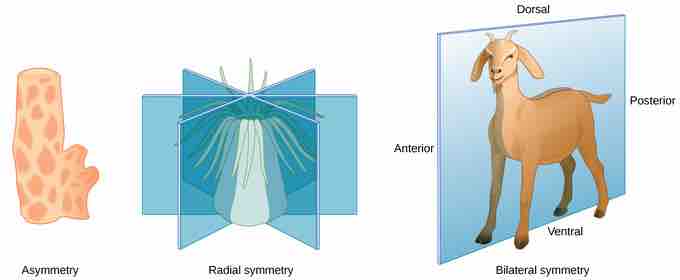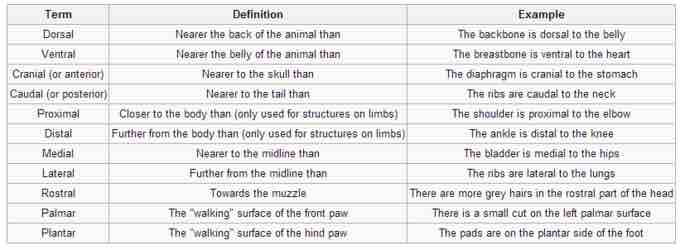Body Plans
Animal body plans follow set patterns related to symmetry. They can be asymmetrical, radial, or bilateral in form . Asymmetrical animals are those with no pattern or symmetry, such as a sponge. Radial symmetry describes an animal with an up-and-down orientation: any plane cut along its longitudinal axis through the organism produces equal halves, but not a definite right or left side. This plan is found mostly in aquatic animals, especially organisms that attach themselves to a base, such as a rock or a boat, and extract their food from the surrounding water as it flows around the organism. Bilateral symmetry is found in both land-based and aquatic animals; it enables a high level of mobility. Bilateral symmetry is illustrated in a goat. The goat also has an upper and lower component to it, but a plane cut from front to back separates the animal into definite right and left sides.

Body symmetry
Animals exhibit different types of body symmetry. The sponge is asymmetrical, the sea anemone has radial symmetry, and the goat has bilateral symmetry.
In order to describe structures in the body of an animal it is necessary to have a system for describing the position of parts of the body in relation to other parts . For example, it may be necessary to describe the position of the liver in relation to the diaphragm or the heart in relation to the lungs. The most common terms used when describing positions in the body are anterior (front), posterior (rear), dorsal (toward the back), and ventral (toward the stomach). Note that the terms superior and inferior are usually not used to describe animals. They are only used to describe the position of structures in the human body (and possibly apes) where the upright posture means some structures are above or superior to others.

Directional terms
The table illustrates common directional terms that are used to describe the position of body parts in relation to other body parts.